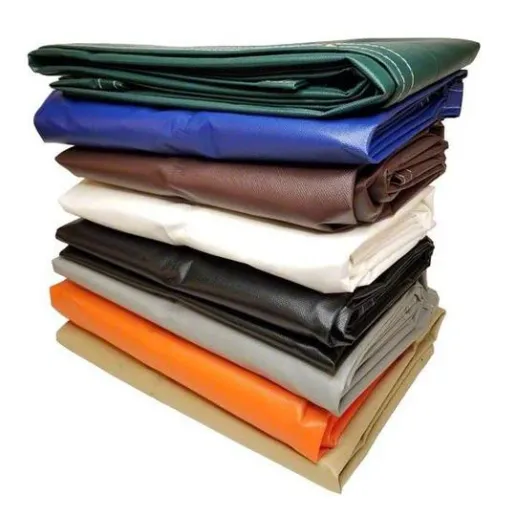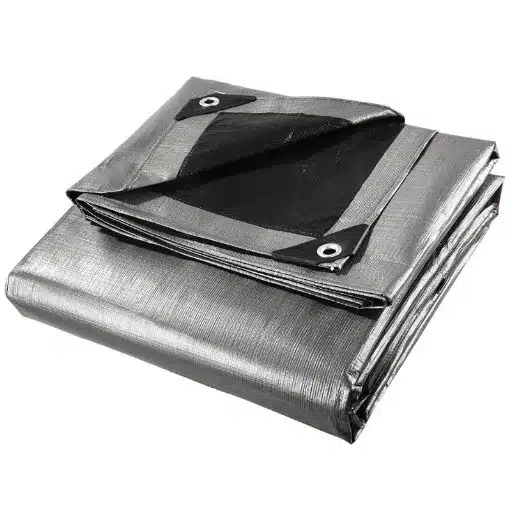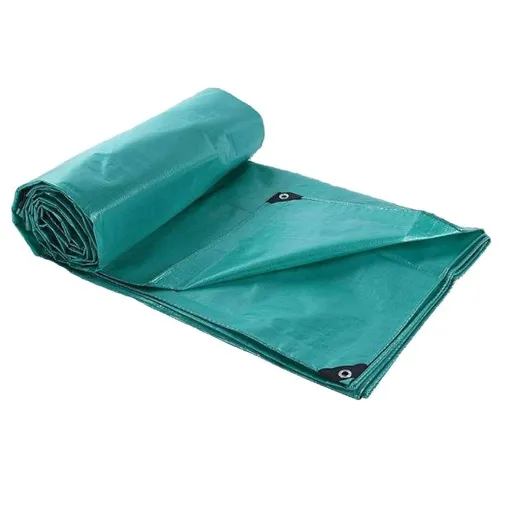Here come heavy-duty tarps for trucks. Built to withstand tough surroundings and offer prime protection, tarp covers are the best recommendation for a freight hauler, logistics operator, or even an individual transporter. This article explains the importance of tarpaulin truck covers, the benefits, and the factors that determine the best choice. Stay as we look into how these durable and versatile covers can protect your cargo and give an uplift to your transportation operations.
FUNDAMENTALS
Understanding Truck Tarps
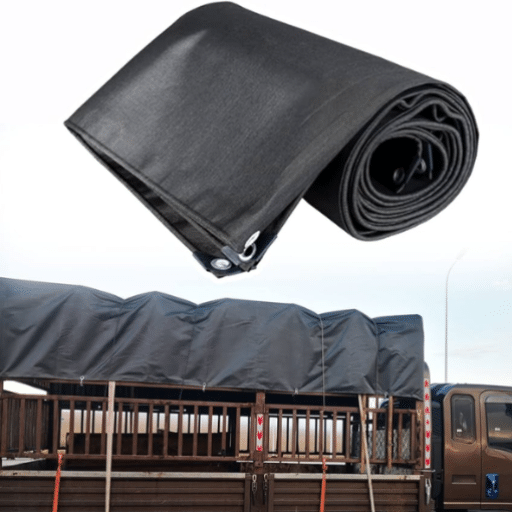
?
What a Truck Tarp Is
Truck tarps, or tarpaulins, are massive sheets of vinyl, polyethylene, or canvas that cover the cargo to further protect it while being transported. These tarpaulins are made with the main objective of protecting goods from bad weather, which includes rain, snow, and harsh sunlight; however, tarps will also repel any debris, dust, and any damage that could come from the wind while in transit. Truck tarps can be manufactured in flatbed tarps, lumber tarps, or steel tarps, all suited for hauling of particular items. By using a truck tarp for their cargo, the transporter assures unsafe cargo; the tarp holds the load, freeing loss or damage from happening.
+
Advantages of Heavy-Duty Tarpaulin Covers
Heavy-duty tarpaulin covers provide all-round better usefulness, and that is why they are invaluable in transportation and storage. First, they come with excellent durability, standing adverse environmental conditions such as ultraviolet rays, rain, and strong winds for long periods. Second, they keep cargo free from moisture, dirt, and debris, so goods arrive or are stored free of any kind of contamination that would impact their quality or integrity. Third, they are highly versatile and find use in construction, agriculture, and logistics. Heavy-duty tarpaulin covers are a sure way to secure loads and lessen their chances of damage and restoration, and they are cost-saving while sufficient for any transport need.
⚡
Main Applications of Tarpaulin Covers
Because of their durability and flexibility, heavy-duty tarpaulin covers are usable in several different industries. Recent statistics show that these covers are predominantly employed in construction for weatherproofing equipment, materials, and works-in-progress. Farmers use these in agriculture to prevent crops, hay, and machinery-when exposed-from moisture and sunlight. In logistics, these tarpaulins are employed to cover cargo on transit, guaranteeing protection of the goods and their security. Even the recreation going groups incorporate the use of tarpaulin at some point, be it for camping which includes building temporary shelters or waterproof ground covers. Their versatility and cost-effectiveness make tarpaulins an indispensable tool in modern industry and everyday use.
MATERIALS
Types of Tarpaulin Materials
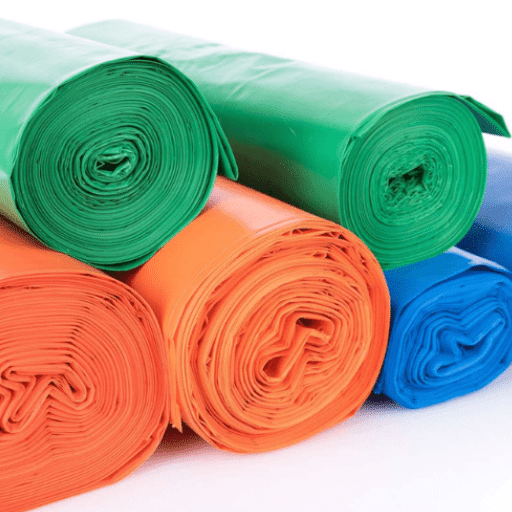
PVC Tarps: Durability and Versatility
PVC tarps have been much touted for their high degree of durability and versatility in the application areas. These tarps are synthetic fabrics of a high order in strength and are sometimes coated with polyester to give further reinforcement to the strength. The increased searches for the term “PVC tarpaulins for industrial use” clearly indicate the growing demand of the product from sectors like construction, agriculture, and logistics. They have the advantage of being completely waterproof, dear protector from the sun, and tolerable to the extremes of temperature, thus befitting for outdoor use over the long periods. With developments in the manufacture of PVC tarps, we see an excellent improvement in the strength-to-weight ratio: lighter to carry without compromises on reliability. This peculiar combination of characteristics has made this product an asset for both commercial and recreational usages.
Polyethylene Tarps: Lightweight and Water Resistant
Polyethylene tarps are reputed for being lightweight and for their remarkable water resistance, which thus renders them the preferred solution for diverse short-time, cost-effective applications. These tarps are manufactured from woven polyethylene, subsequently laminated with another layer to increase durability and waterproofing. They are typically used for covering goods, temporary roofing, or to offer protection to various kinds of equipment from adverse weather. The recent search trends and data suggest that polyethylene tarps are highly favored by consumers undergoing projects that call for simple installation and portability. Additionally, production technology advancements raised the UV resistance and tear strength of the tarps, allowing them to hold their own despite being extremely lightweight.
Canvas Tarps: Strength and Breathability
Canvas tarps are known for their well-earned prominence for heavy strength and breathability, making them preferred for several taxing applications. Unlike polyethylene tarps, canvas tarps are made out of very rugged cotton or polyester fabric, thereby giving them higher solid durability and resistance to extreme weather conditions. By being breathable, they prevent condensation building up, being very suitable for covering machinery or equipment and materials that require some air.
According to the recent data from ‘s search engine, interest in canvas tarps has been slowly growing along with new professionals in construction, agriculture, and transport. Typical searches comprise queries relating to the best brands for canvas tarps, waterproofing, and maintenance tips, showing a consumer bent for trust and longevity. All these indicate that for professional and personal use, users regard the strength and environmentally friendly nature of canvas tarps.
SELECTION
Choosing the Right Tarpaulin for Your Truck

⚖
Factors to Consider: Load Type and Climate
When selecting the perfect tarp for your truck, one must recognize the type of load it is carrying as well as the climatic conditions of the region. Take for instance a heavy-duty load of construction material or machinery that will ideally demand very thick tarps such as those made from canvas or PVC and these tarps must provide durability and some level of tear resistance. However, lighter loads would probably require polyethylene tarps simply because they weigh less.
From this thought combined with recent search data, it appears people always seem interested in asking about waterproof and UV-resistant properties. If it usually rains or snows a lot in your place, waterproof tarps become a must-have so that the loads do not get damaged due to moisture. On the other hand, if the sun in your town is really hostile, then you should invest in tarps that are UV resistant so that they do not degrade and generate heat. Theoretically, the “right” choice of tarp should be one that offers maximum protection based on the contrasting factors concerning tarpaulin requirements of the load and environmental opposing forces.
Frequency of Use and Custom Tarp Options
In tarpaulin consideration, frequency of use plays a very important role in deciding which option should best serve your needs. According to the latest search data from ‘s engine, users inquire about tarps that would stand for daily or heavy use. Heavy-duty tarps reinforced with edges and heavy-duty grommets are preferable for frequent use to really last the distance. Custom tarps are a popular option with users since they can be made to exact dimensions and materials suitable for an exact fit on special-purpose applications. Whatever the industry, transportation, or personal project, a tarp that can withstand repeated handling and environmental stresses will ensure maximum value and functionality.
Comparing Tarpaulin Options for Different Industries
Tarpaulins are multipurpose tools in many different industries, but the choice of the right tarp obviously depends on the requirements of the respective industry. In construction, heavy tarpaulins are commonly selected to resist punctures and to withstand foul weather conditions so as to shield materials from UV rays. Similarly, mesh tarps are the choice of agriculture industries for providing ventilation while granting protection against rain and sunlight to crops or to hay.
Transportation and logistics want to obtain lightweight yet good canvas tarps for load securing in trucks while waterproof tarps are widely used for protecting goods against water damages. Industry, however, needs fire-retardant tarps to boost safety in environments involving welding or processes of flammable nature. Custom tarpaulins that cater to specific requirements of the industry are becoming popular by the day in providing a means of addressing problems that would otherwise seem insurmountable.
According to ‘s latest search data, increased environmental awareness has also led to a growing demand for eco-friendly tarpaulin alternatives. Many industries are now opting for tarps made from recycled or biodegradable materials, trying to balance functionality with sustainability. Consideration of the materials, durability, and specific applications has become imperative when comparing various tarpaulin options to ascertain the best output and worth of an application.
MAINTENANCE
Maintaining Your Tarpaulin Cover
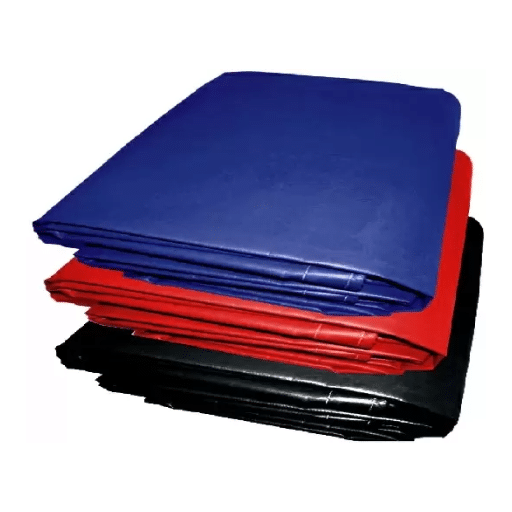
🧽
Tips for Cleaning and Longevity
By maintaining excellent care for your tarp cover, the life of the tarp can be considerably extended, thereby serving as an effective cover for several years. Cleaning procedures involve removing any loose dirt or debris from the tarp with a soft brush or cloth. Using a mild soap solution of lukewarm water, clean off heavy stains with a soft scrubbing on the affected area, avoiding any harsh chemicals that cause deterioration of the tarp material itself. Then, rinse the tarp clean using fresh water, and finally, allow the tarp to dry out completely before making the decision to store it. Search trends show a growing curiosity about ways to protect tarps from mold and mildew; with stucco rendering process underlay, it is always advised to keep the cover in a dry and well-ventilated area and perform regular checks for any dampness or damage. All these stages can go a long way toward keeping a tarp durable and good in performance as the years go by.
📦
Storage Recommendations for Tarps
For the best preservation and longevity of tarps, cleanliness and dry storage take precedence. The question ‘how do I prevent mold and mildew on tarpaulins?’ tops the list, according to search trend data. Put simply, never pack tarps before drying them entirely for residual moisture will only nurture harmful fungi. Store your tarp in a dry atmosphere with some air circulation, and if possible, off the ground to maintain a distance from dirt or pests. To keep the tarp clean, place it inside a dust-proof yet breathable storage bag container. During storage, conduct regular inspections of your tarp, looking for signs of dampness or damage, and undertake immediate repair if necessary. This way, you establish a safeguard for your tarp, rendering it dependable when next needed.
🔧
Repairing Your Tarpaulin: Step-by-Step Guide
With time, slight tears, holes, or wear may occur on the tarpaulin under a bad weather encounter or repeated usage. The sooner such damages get repaired, the longer their life span will be, hence being more effective. Here’s a simple step-by-step process on how to repair your tarp cover:
- 1
Checking the Damage
After setting up the tarp on a flat clean surface, carefully inspect all holes, tears, or worn areas due to damage. Mark each of the damaged areas with chalk or tape so that none will be missed during repair work. - 2
Cleaning the Area of the Damage
Before any repair is made, the damaged spot should be cleaned with a mild soapy solution to remove dirt, grease, or debris, using a cloth to do the work. Let the tarp dry so that the repairs will stick firmly. - 3
Choosing the Correct Repair Kit
Select a repair kit appropriate for your tarp material. For instance, vinyl tarps may require vinyl repair tape, glue, or patches. Polyethylene tarps will usually require some type of specialized adhesive or heat-sealed patches. - 4
Spread Adhesive or Affix Patch
When using adhesives or tapes, cover the tear or hole completely whilst ensuring that air bubbles are not trapped underneath. If patches are used, cut a piece slightly larger than the area to be repaired and affix it firmly over the patch using adhesive or a heat-sealing tool, depending on the material. - 5
Additional or Secondary Reinforcement
If the damage is substantial or in a high-stress area, additional reinforcement may be necessary: Apply a second patch over the primary repair or reinforce the edges with strong adhesive tape. - 6
Testing the Repair
Once the repair has cured according to the manufacturer’s recommended drying or curing time, test it by applying light stretching or tension on the tarp to ensure that the patch or adhesive holds firmly under pressure. - 7
Regular Maintenance
Even after repairs, regularly inspect the tarp so that small damages are prevented from becoming bigger. Vigilant maintenance can encourage easier and better-quality repairs in the future.
By following the outlined procedures, you will regain the functionality of your tarpaulin and thus continue to depend on it for a multitude of applications. According to the latest research, repairs carried out with specialist adhesive patches or heat-sealing solutions tend to last the longest, making them the preferred option for tarp upkeep.
ANALYSIS
Comparative Analysis of Tarpaulin Options
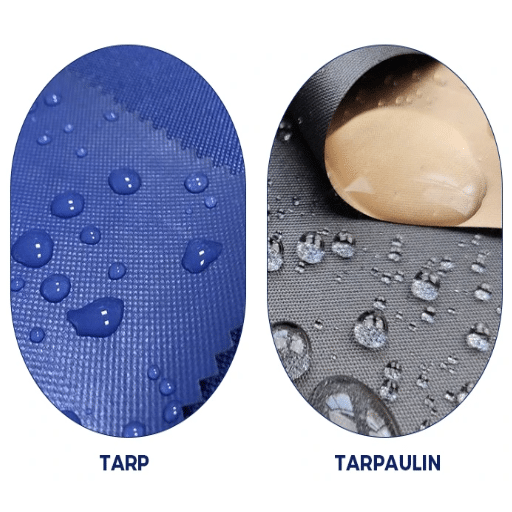
💰
Cost vs. Efficiency: What to Expect
The purchase of tarpaulin is an investment. Hence, the people will have to consider what kind of efficiency a particular tarp would offer for the price it asks. According to the latest search data from ‘s search engine, cheap tarps tend to lack durability and weather developments and can therefore be used only for short-term or light service. More expensive tarps generally made using heavy-duty materials like vinyl or polyethylene provide better longevity and protection from harsh weather conditions and abrasion. Hence, mid-level tarps often give the best value for money, providing enough durability for an adequate price. Therefore, users should always assess their particular requirements by considering frequency of use, exposure to extreme weather, and the desired lifespan before making the final decision. For almost all uses, the purchase of tarpaulins with durability in mind rather than the least price eventually translates into the most efficiency, as it will require fewer replacements and thus fewer costs.
🚛
Suitability for Different Truck Types: Flatbed, Dump Truck, and Semi Truck
In choosing equipment or materials for various truck types, one must treat the trucks with respect due to their operational differences. Between flatbed types, durability will always take priority for weather resistance because of their open design exposing cargo to the elements. Heavy-duty tarps and restraints ensure that the goods are safely transported while minimizing wear and tear on the truck bed.
On the contrary, dump trucks need materials that resist constant impact and abrasion from heavy materials-laden with gravel, sand, or debris. Reinforced linings and robust hydraulic parts are necessary to keep up and prolong their efficiency, especially in an environment of construction-oriented work or even mining where the truck’s task can be very extreme.
Finally, being optimized for fuel and loads are crucial for semi-truck operations since their area of operations is long haul-wide highway sections. Lightweight materials increase the fuel economy quite well without disregarding the protection of cargo. Also, aerodynamics-based improvement, like side skirts, gives a new facelift to trailers and has become popular to maximize performance and reduce operational costs as per the latest trends cited in search insights. Properly selected materials and improvements tailored for each truck type guarantee the best performance and major return on the investment.
🔧
Tarp Accessories That Will Make Your Tarps Even More Functional
Any accessory to keep a tarp safer and more useful is sure to be a good investment; there are many suggestions for tarpaulin accessories. According to recent data from ‘s search engine, these are some of the highly sought-after tarpaulin accessories in demand for increased functionality:
Bungee Cords and Straps
These incredibly versatile products rank extremely high in searches for tarp accessories. They secure tarps so they do not fly off in adverse weather or while in transit.
Tarp Clips and Clamps
Most commonly used when an extra bit of grip and stability is needed, they are highly sought after. The tarp clips and clamps work best where there are no grommets present or if they need to be supplemented.
Corner Protectors
Users seem to prioritize protecting the tarp as well as whatever is underneath it. Corner protectors eliminate abrasion at pressure points, thereby extending the life of a tarp.
Grommet Kits
Search results suggest a rising interest in DIY grommet kits, allowing users to repair or customize tarps for specific requirements.
Weight Distribution Bars
Weight distribution bars for big truck tarps are frequently mentioned.
By using these accessories, tarps’ lifespan can be extended while their function and efficiency are simultaneously improved. What tools are trending right now? Staying abreast of this information ensures that your configuration is at the cutting edge of modern demands.
FAQ
Frequently Asked Questions
Q
What are the advantages of installing heavy-duty truck tarps?
Heavy-duty truck tarps are constructed under the assumption that they will face rough weather while transporting freight. These tarps usually have reinforced edges and brass grommets to ensure adequate security on the flatbed trucks and trailers. Being tear-resistant, these tarps offer perfect protection for the cargo against adverse weather conditions and with their waterproof nature-they keep the cargo dry. Also, different heavy-duty tarps are made to fit different needs extrusion-based tarps available in 18 oz or 14 oz. The safety of your cargo in transit can be greatly enhanced by investing in heavy-duty tarps.
Q
How to pick the appropriate flatbed tarps for my truck?
Choosing the proper flatbed tarp concerns what type of cargo you usually send and the specific needs of your flatbed truck. If you are a lumber hauler, then lumber tarps will cover and protect those loads efficiently. Look for water-resistant material as well as UV-resistant material so that these tarps will resist damage caused by the elements. Also, consider the size of your flatbed truck and the dimensions of your cargo to find tarps that fit well. Features such as grommets and reinforced edges should also be looked for since they add to the functionality and longevity of the tarp.
Q
What is a custom tarp, and might my dump truck require one?
Custom tarps are made specifically for your dump truck, designed to meet the unique requirements and angles of your vehicle. You would especially need one when you regularly carry oddly shaped loads or materials that require special protection. Custom tarps can be manufactured from heavy-duty materials to ensure maximum wear resistance. It can also incorporate features such as grommets and reinforced edges that would make the tarp easier to use. With a custom tarp, you can rest assured that your dump truck cargo is properly protected against weather-related damages and transportation regulations.
Q
What types of trailer tarps are offered for freight transport?
Freight transport trailer tarps are various, each serving a special need of cargo. Common choices include flatbed trailer tarps that completely cover loads on flatbed trucks and mesh tarps that allow ventilation of loads needing air circulation. For the heavy-duty application, one can go with tarps of 18 oz or mil heavy-duty materials offering the best protection. There is also an option of having trailer tarps lightened with UV-protection or water resistance, suitable for outdoor applications. Choosing the right trailer tarp will do wonders for freight safety and integrity throughout the entire transport operation.
Q
How do tarps with grommets enhance the functionality of a truck tarp?
Grommeted tarps indeed enhance the functionality of truck tarps by securing tie-down points on the tarp. These grommets make it easy to secure the tarp to the truck bed or trailer, so it won’t move around and get either blown away during transit, ensuring protection of the cargo from the wind, rain, and other elements. In addition, the grommets help evenly distribute the tension across the tarp, thus reducing tracking and the likelihood of the tarp being torn, hence extending the tarp’s lifespan. When choosing a truck tarp, you want to look for one outfitted with brass grommets for extra strength and durability.
SOURCES
Reference Sources
Protect Your Cargo with Confidence
Investing in the right tarpaulin truck cover is essential for protecting your cargo and ensuring successful transportation operations. Choose quality materials, maintain them properly, and consider your specific operational needs to maximize the value of your investment.

